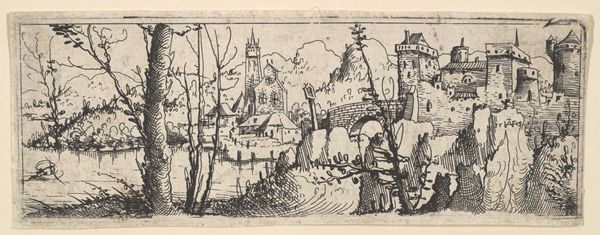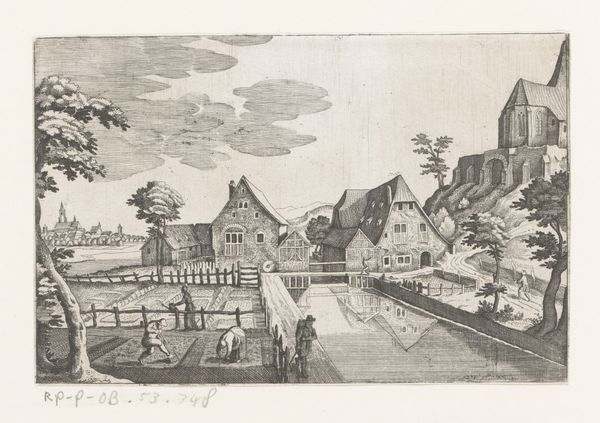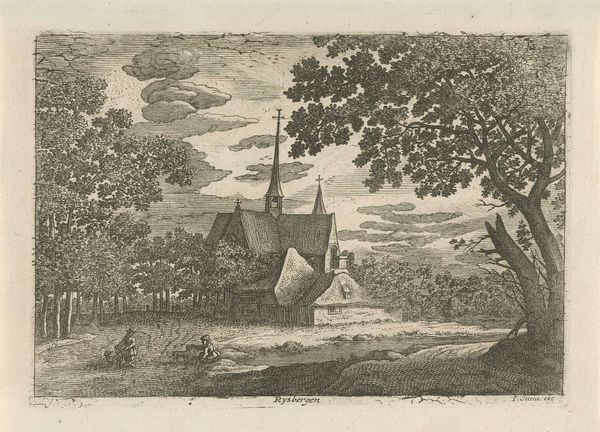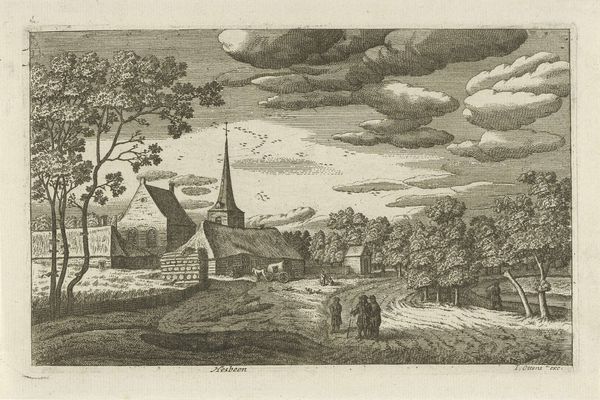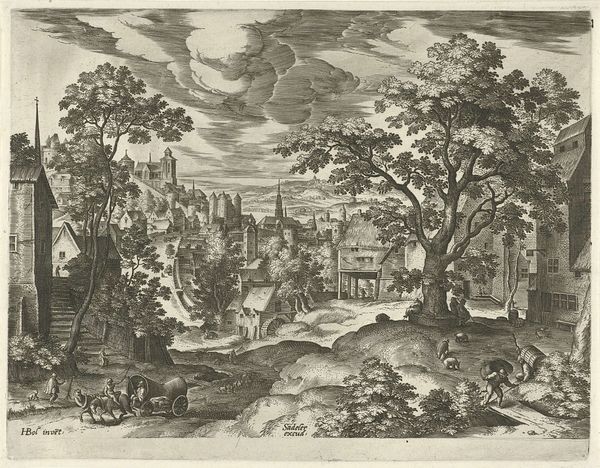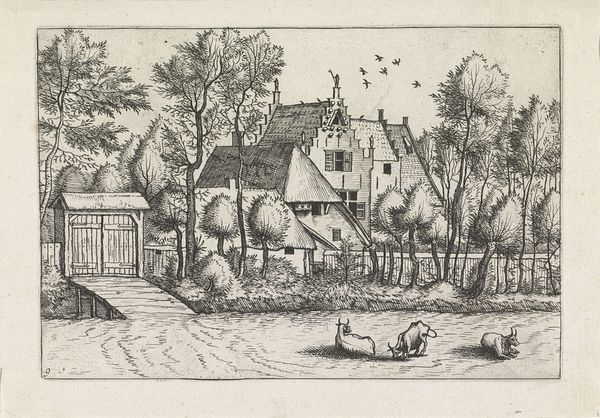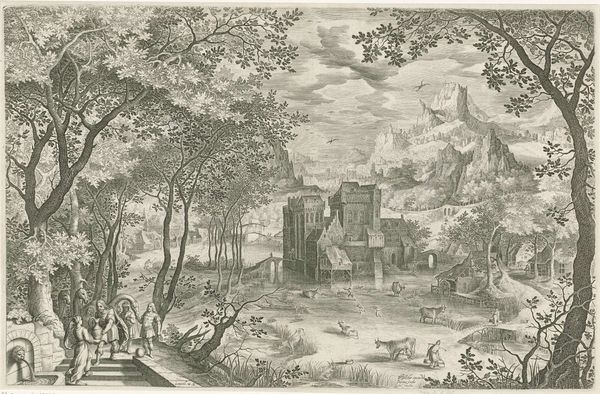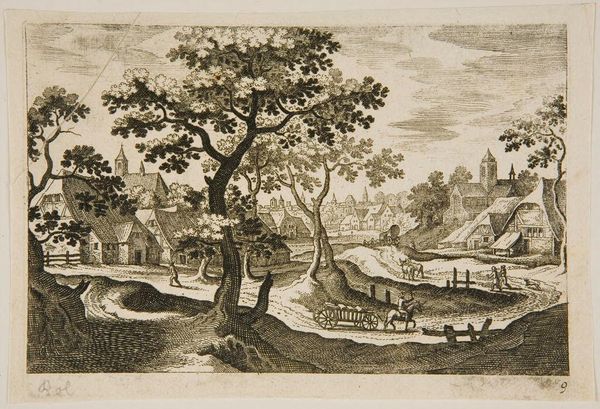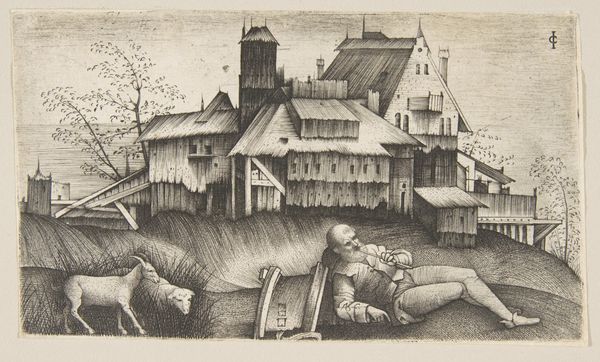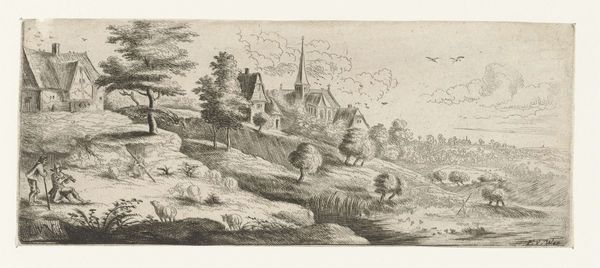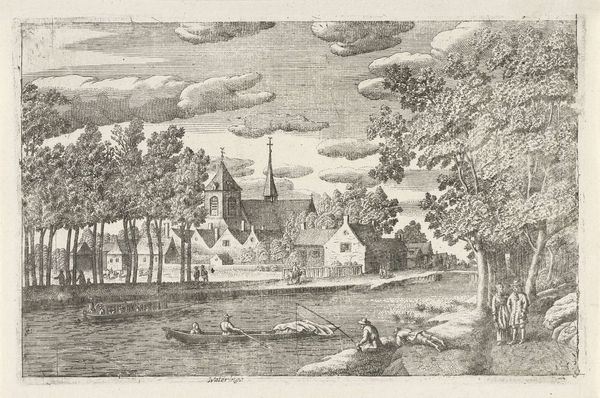
drawing, ink
#
drawing
#
landscape
#
ink
#
cityscape
#
realism
Dimensions: stone: --- x 406 mm image: 231 x 331 mm sheet: 317 x 416 mm
Copyright: National Gallery of Art: CC0 1.0
Editor: So this is Henry Simon's "Humboldt Park" from 1938, created with ink on paper. It has a rather idyllic feeling, a snapshot of leisure in what looks like a public space. What do you see when you look at this piece? Curator: This drawing offers a glimpse into the intersection of urban planning and social life in the 1930s. Humboldt Park, then and now, served as a vital public space. I wonder, what was Simon trying to communicate about this shared space through his choice to render it in this way? Is this purely representational or is something more at play? Editor: Well, the style seems realist, or maybe slightly romanticized. The people are small figures, almost archetypes rather than portraits. Perhaps he's focusing less on individuals and more on the park's function as a space for community. Curator: Exactly. Consider also the date: 1938. The Great Depression was still deeply felt. Parks offered refuge and recreation accessible to all. Could the artist be subtly commenting on class and access through his representation of leisure? Note how even in monochrome, the light and shadow create depth, inviting the viewer into this democratized space. The almost fairytale castle looming in the background feels aspirational, doesn’t it? A kind of shared fantasy for those using the park. Editor: That's fascinating! I hadn't considered the impact of the Depression era on its meaning. So you're suggesting it’s not just a pretty picture but also a commentary on social realities? Curator: Precisely. Art is rarely created in a vacuum. Exploring the social context is critical to unlocking deeper interpretations. Editor: This has totally changed how I view the drawing! Thanks so much. Curator: My pleasure. Always consider the voices that are present and, crucially, those that are absent from an artwork and why.
Comments
No comments
Be the first to comment and join the conversation on the ultimate creative platform.
